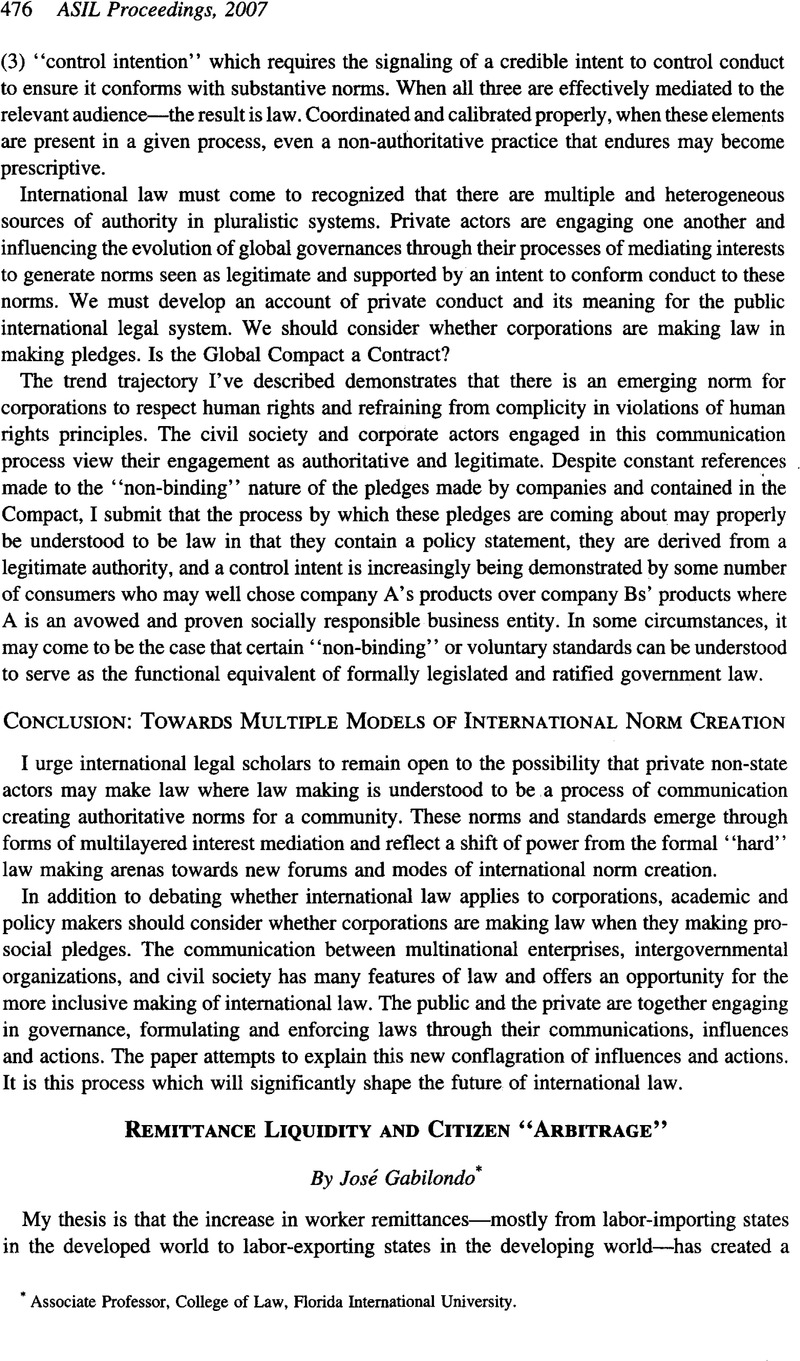No CrossRef data available.
Article contents
Remittance Liquidity and Citizen “Arbitrage”
Published online by Cambridge University Press: 28 February 2017
Abstract

- Type
- Roundtable—A Multiplicity of Actors and Transnational Governance
- Information
- Copyright
- Copyright © American Society of International Law 2007
References
1 See e.g., O’Neill, Alexander C., Emigrant Remittances: Policies to Increase Inflows and Maximize Benefits, 9 Ind. J. Global Leg. Stud. 345, 352-55 (2001)Google Scholar; Gatmaytan, Dan, Death and the Maid: Work, Violence, and the Filipina in the International Labor Market, 20 Harv. Women’s L. J. 229 (1997)Google Scholar.
2 Bank, World, Global Economic Prospects: Economic Implications of Remittances and Migration 88 (2006)Google Scholar.
3 Kapur, Devish, Remittances: The New Development Mantra 331-60, 339, in Remittances Development Impact and Future Prospects (Maimbo, Saamuel Munzele & Ratha, Dilip eds., 2005)Google Scholar.
4 Multilateral Investment Fund, Inter-American Development Bank, Sending Money Home Remittances As A Development Tool in Latin America and the Caribbean (Jan. 24-25, 2005). Making the marginal impact of these sending costs dearer, many remitters earn little more than subsistence wages in their country of employment.
5 In 2000 Western Union reported operating profit of $684 million on gross revenues of $2.3 billion. See World Bank, supra note 2, at 140. The World Bank estimates that the total cost—including staff time and other administrative costs—of the first remittance transaction for a particular client is $5.50, with costs dropping to $3.60 for subsequent transfers and to $3.00 if electronic processing is used for the transaction. Id. at 140-44.
6 Id. xi.
7 Consider the Asian Development Bank’s opposition to the Philippines’ proposed use of securitization proceeds to provide general budget support for the government: “We don’t want the money to flow to the government,” Beiton (an ADA official) said. “We think it’s much more efficient to get the money into the private sector and have rational market economics dictate it rather than simply make it another form of government borrowing.” Doris Dumlao, Bonds Backed by Overseas Foreign Workers Pushed, Business World (May 9, 2005) 2005 WLNR 7231657.


